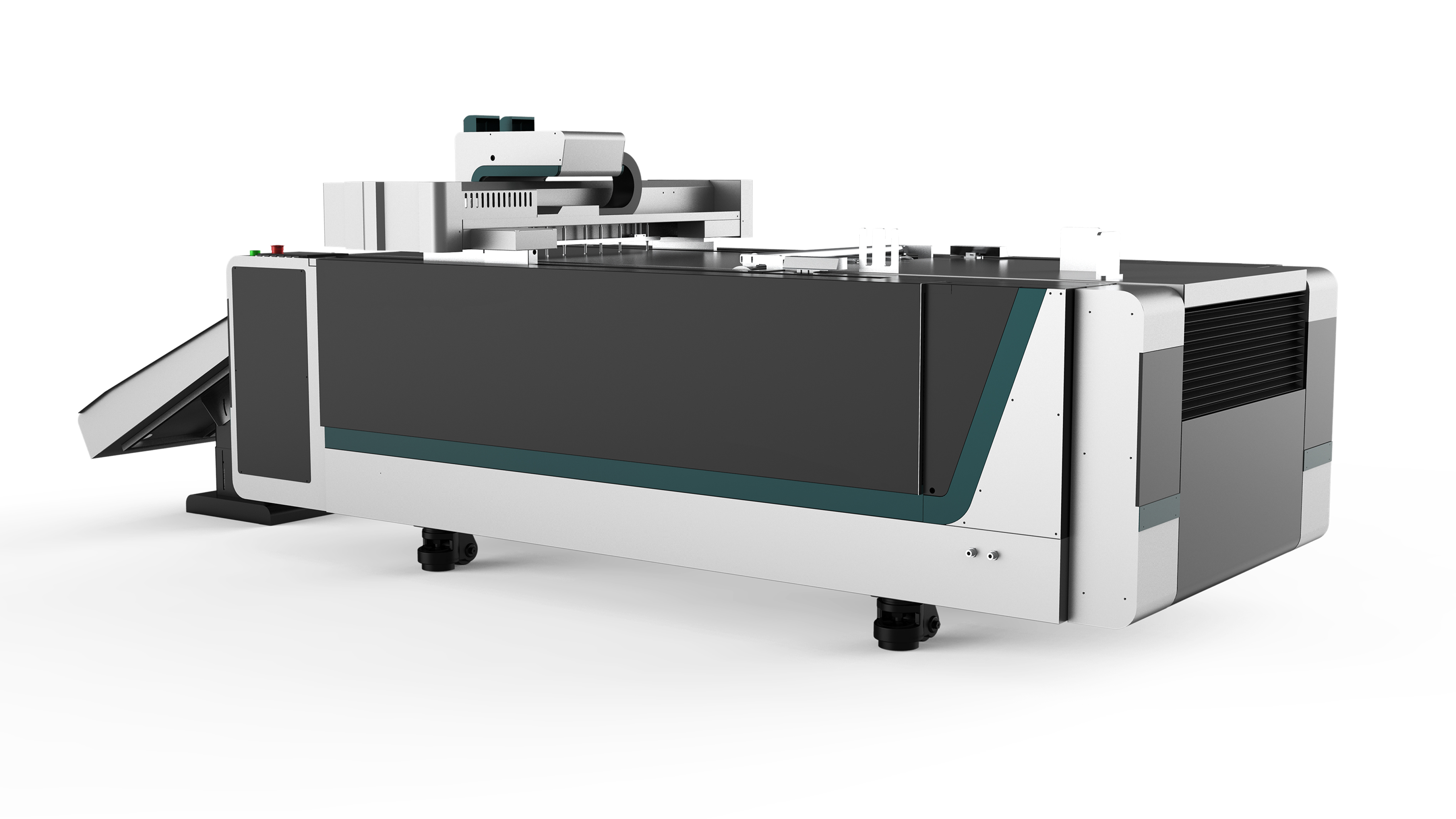Different types of cutting machines have different specifications to meet different business needs and manufacturing processes. Choosing the right cutting machine can help companies optimize the production process, save time and costs, while ensuring cutting quality and shape. It’s important to carefully analyze your cutting requirements and the types of materials you use to determine the best cutting machine for your business. There is a wide range of cutting machines on the market, ensuring that every industry can find the perfect machine for their specific needs.
Cutting machines are indispensable tools in a range of industrial applications, from aerospace to construction and manufacturing. Employing various mechanisms such as blades, lasers, water jets or plasma depending on the material being cut (from wood to metal and paper fabrics), these versatile machines can be operated manually or automatically via computer numerical control programming to ensure cutting accuracy according to The level required for each specific job.
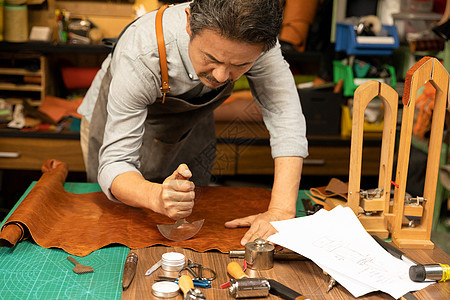
laser cutter
Water jet cutting machine
Plasma cutting machine
Digital knife cutting machine
Die cutting machine
laser cutter
Laser cutters are cutting-edge technology that use high-power lasers to vaporize, melt, or burn through workpieces to achieve precise cuts or engravings. The laser produces a beam of light that is focused onto the workpiece through a lens. This concentrated beam heats the material quickly, melting or evaporating it in the process, allowing for precise cutting or engraving.
How does a laser cutting machine work?
The machine works by converting electrical energy into a high-power, finely focused laser beam. Laser beams are produced by exciting a gas mixture with an electric discharge, a method called gas discharge excitation. The laser beam then passes through a series of mirrors and lenses before being directed onto the workpiece. The beam's spot size is approximately 0.1 mm or less, allowing for precise cuts without damaging surrounding materials. Additionally, lasers can be used to engrave or mark materials without cutting them completely.
Advantages of laser cutting machines
There are many advantages to using a laser cutter. In addition to the accuracy and precision of cutting, these machines are fast and efficient, resulting in high productivity levels. They are also very versatile, capable of cutting a variety of materials, including plastic, metal, wood, and fabric. Since there is no physical contact between the cutting tool and the workpiece, there is very little waste produced during the cutting process and the cutting tool itself has a long service life. Laser cutters can also be programmed to cut complex shapes easily and accurately, saving time and money.
Safety instructions
Laser cutters can pose some risks if used incorrectly. These machines produce high-powered laser beams that can cause eye damage if not properly shielded. If the user needs to observe the cutting process, appropriate safety goggles must be worn. The materials being processed may also produce harmful fumes requiring appropriate ventilation or respiratory protection.
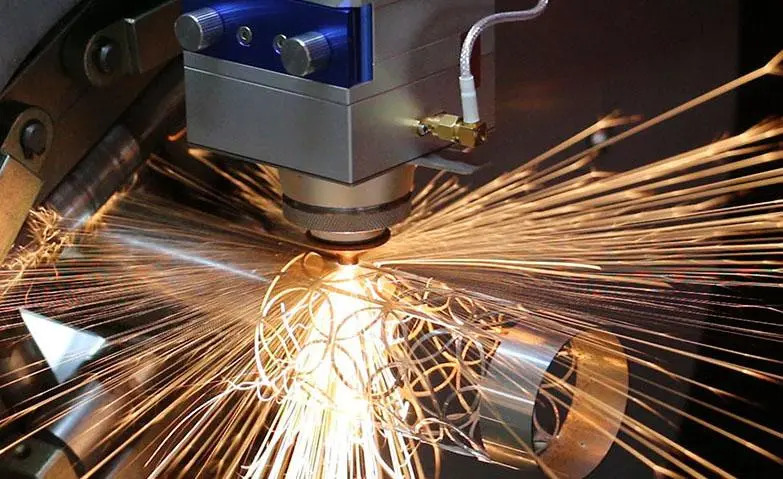
In short, a laser cutting machine is a precision device that uses a high-power laser beam to precisely cut materials. Efficient, precise and versatile, these machines revolutionized manufacturing. When using a laser cutting machine, user safety must be kept in mind. These machines are valuable tools in many industries, providing a level of precision and detail unachievable with traditional cutting methods.
Water jet cutting machine
A waterjet cutting machine is an industrial cutting tool that uses a high-pressure water jet to cut through a variety of materials including metal, glass, stone, ceramics, and plastics. This is a versatile cutting method that can handle materials of different thicknesses, shapes, and sizes. The machine consists of a CNC-controlled cutting head that moves along the XY axis, creating a high-pressure water jet to cut the material. Waterjet cutting technology can cut accurately at high speeds without overheating, melting or deforming the material.
How does a water jet cutting machine work?
The waterjet cutting process starts with a water pump that creates a high-pressure stream of water. The airflow is then focused through a sapphire or diamond orifice to the cutting head, where it is mixed with abrasives such as garnet or aluminum oxide to enhance its cutting capabilities. The CNC controller guides the movement of the cutting head, allowing high-precision cutting in any direction. Waterjet cutting machines can machine complex shapes, sharp corners and small holes with minimal edge deformation, burrs or heat-affected zones.
Advantages of water jet cutting machine
Waterjet cutting technology offers several advantages over other cutting methods. First, it is environmentally friendly as the cutting process only uses water and natural abrasives. Secondly, waterjet cutting machines can cut any material without creating a heat-affected zone or chemical reaction, maintaining the integrity of the material. Third, the technology enables high cutting speed and precision, minimizing production time and labor costs. Finally, the waterjet cutting process produces clean cuts that minimize secondary processing steps such as grinding, grinding or polishing.
Applications of water jet cutting machines
Water jet cutting technology is widely used in various industries. For example, it can be used to cut complex designs and shapes in the aerospace, automotive and shipbuilding industries. It is also used in the manufacturing of electronics, medical equipment and construction. The technology can also be used to cut food items such as noodles, candies and fruits without changing their taste, texture or shape. Additionally, waterjet cutting is ideal for cutting materials that are sensitive to heat or stress, such as glass, ceramics, and composites.
Waterjet Cutting Machine Maintenance and Safety
Like other machines, waterjet cutters require regular maintenance to function optimally. The machine's high-pressure pump requires regular oil changes, filter changes, and seal checks. The cutting head and orifice need to be cleaned to remove any debris or buildup that may affect the cutting process. Additionally, operators must follow safety protocols when using waterjet cutting technology. Safety glasses, hearing protection, and gloves are essential to protect operators from high-pressure water and abrasive materials.
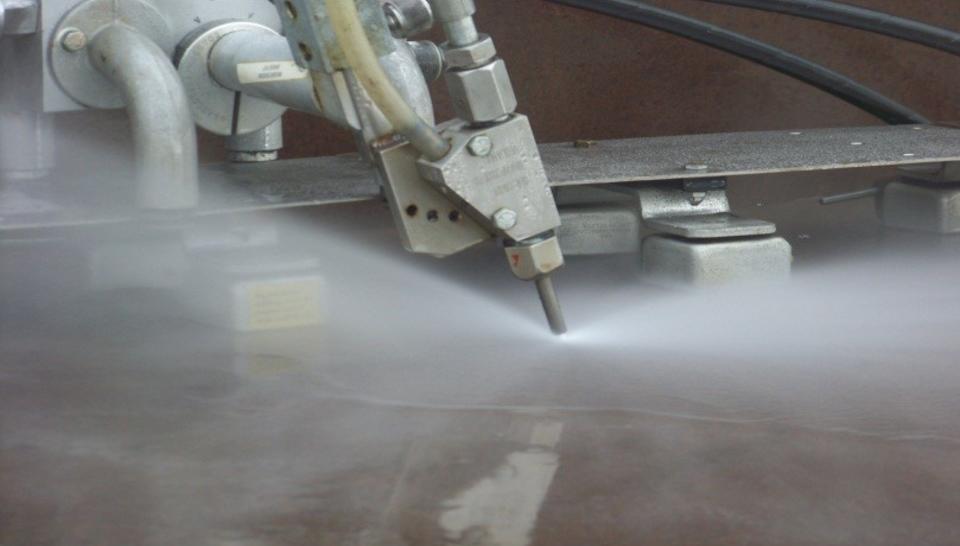
In summary, waterjet cutting technology is becoming increasingly popular across industries due to its versatility, speed, and accuracy. The technology provides a clean, precise, and efficient cutting method that can handle materials of varying thicknesses, shapes, and sizes. Waterjet cutting machines are environmentally friendly, produce minimal waste, and require minimal secondary processing. However, the technology is not without limitations. It is not suitable for cutting materials thicker than 150mm and may require additional support when cutting large or heavy workpieces. Nonetheless, waterjet cutting is a cost-effective and reliable cutting method suitable for a variety of applications.
Plasma cutting machine
Plasma cutting is a process that has been around for many years for easily cutting metals of varying thicknesses. A plasma cutter, also known as a plasma torch, is a tool that uses a high-speed stream of ionized gas to cut materials. It is necessary to understand how these machines work in order to better grasp their advantages and limitations.
How does a plasma cutter work?
Plasma cutters use an electric arc that creates a high-temperature plasma to cut metal. The machine first delivers compressed air or an inert gas (such as nitrogen or argon) through a nozzle while introducing an electrical current to the gas. The electrical current ionizes the gas, turning it into plasma and creating a small channel through which the rest of the gas can move. The heat from the arc melts the metal, and the plasma blows away the molten metal to create a clean cut.
What are the benefits of a plasma cutter?
One of the biggest advantages of using a plasma cutter is that it can quickly and easily cut through a variety of metals, such as steel, aluminum, brass, and copper. They are also highly accurate due to their ability to make precise cuts, making them ideal for manufacturing shops, car manufacturing plants and a variety of other industries. Additionally, these machines can be used to cut at a variety of angles, making them extremely versatile.
What are the limitations of plasma cutters?
Although plasma cutters have many advantages, they also have some limitations. For example, these machines may not be the best choice for cutting thicker metals because the plasma arc may not generate enough heat to melt the metal. Another limitation is that a plasma cutter generates a lot of heat and light, which can create a safety hazard.
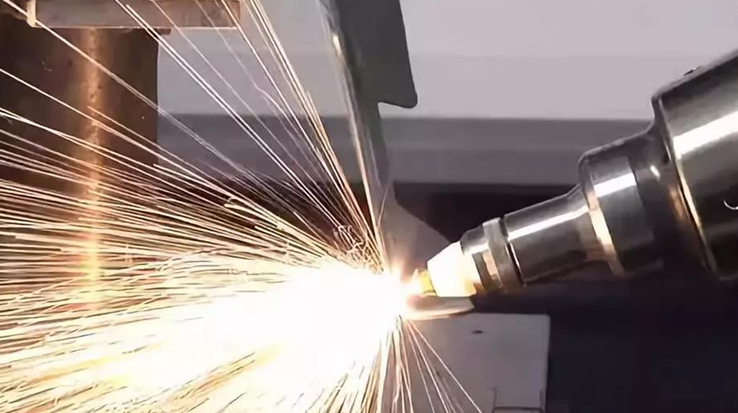
Digital knife cutting machine
Digital knife cutting machines are programmed to cut materials using digital files. It operates like a printer, but instead of printing on paper, it cuts the material with a specialized blade. The machine's components include blades, computers, and software. The software enables precise cutting and can replicate specific cutting patterns. The technology is ideal for high-volume production of many components.
Application of digital knife cutting machine
Digital knife cutting machines can be used to cut a variety of materials with incredible precision. They can be used to cut a variety of flexible materials such as paper, cardboard, foam and plastic. Industries such as packaging, textiles, automotive, aerospace and signage all rely on digital knife cutting machines. These machines provide accurate and fast cutting, thereby increasing efficiency and productivity.
Advantages of digital knife cutting machines
1. Using vibrating knife cutting technology, there is no need to make molds, and intelligent cutting has entered the era of digital processing.
2. Multifunctional tool holder design, cutting, beveling, kiss cutting, punching, and scribing, one machine can complete multiple processes.
3. It can complete pattern cutting that is difficult and complex in style and cannot be achieved by die-cutting machines.
4. Powerful nesting and counting system, automatic nesting and accurate counting, achieving high utilization strategy.
5. Accurate computer simulation and programmed operation avoid hidden waste and reduce enterprise material costs.
6.AOL CNC blade cutting machine can be equipped with an automatic feeding system to achieve mechanized cutting.
Types of digital knife cutting machines
There are many types of digital knife cutting machines on the market today. Some of the most common types include flatbed cutters, automatic cutters, and CNC machines. Flatbed cutters use a platform to hold the material while the blades cut it. Automatic cutters, on the other hand, use a robotic arm to hold the material in place while the blade cuts. CNC machine tools use a computer system to control the movement of the blades. Each machine has its own unique features and capabilities.
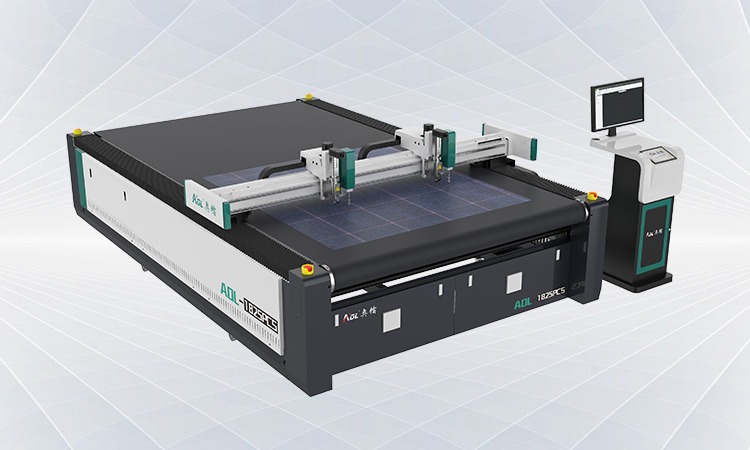
All in all, digital knife cutting machines are an ideal solution for manufacturing needs. They offer many advantages, including accuracy, consistency, and speed. They are also great for soft and hard materials, which makes them versatile. There are different types of digital knife cutting machines available in the market and industries can choose the one that meets their specific requirements. Digital knife cutting machines are the future of manufacturing and cutting, and technology continues to evolve to provide more precise solutions.
Die cutting machine
A digital die-cutting machine is a device that uses electronic software to precisely cut patterns on a variety of materials. It's similar to a printer, but instead of printing an image, it cuts it from paper, vinyl, fabric, or other materials. Digital die-cutting machines come in a variety of sizes, and different models will have specific cutting depths and materials they can cut.
How does a die cutting machine work?
You can create your own design or use pre-designed templates. Once your design is uploaded to the software, you can adjust the size, shape, and orientation. Next, load the material you want to cut onto the cutting mat and insert it into the digital die cutting machine. The machine will read the design from the software and cut the material accordingly. Once the cutting process is complete, you simply remove the material from the cutting mat.
What can a die cutting machine do?
The possibilities are endless! You can create custom stickers, labels, invitations, greeting cards, scrapbook pages, home decor, and even apparel designs. You can cut out intricate designs, text, and shapes that would be difficult or impossible to do by hand. Digital die-cutting machines can also be used to personalize gifts, make party favors, create templates or patterns, and more.
Why do you need a digital die cutting machine?
Digital die cutting machines can save you time and money while also allowing you to create truly unique and personalized projects. Instead of buying pre-made items, you can create your own custom design. You also have the flexibility to adjust the size, shape, and color of your design. Digital die cutting machines are also faster and more precise than hand cutting, which will save you time and frustration. Whether you're a professional crafter or just starting out, a digital die-cutting machine is a valuable tool for any DIY project.
Summarize:
In summary, choosing a cutting machine that suits your needs is crucial to achieving the desired results. Different types of machines are suitable for specific cutting tasks, so it's important to understand your own requirements and research which machine is most suitable. Trade associations, trade shows, magazines and online resources are all excellent sources of information when researching cutting machines. Ultimately, by fully understanding the basics of automation or machining cutting tools, and being aware of the latest trends and advancements in the industry, you will be able to make an informed decision when it comes to choosing the perfect machine for you.


